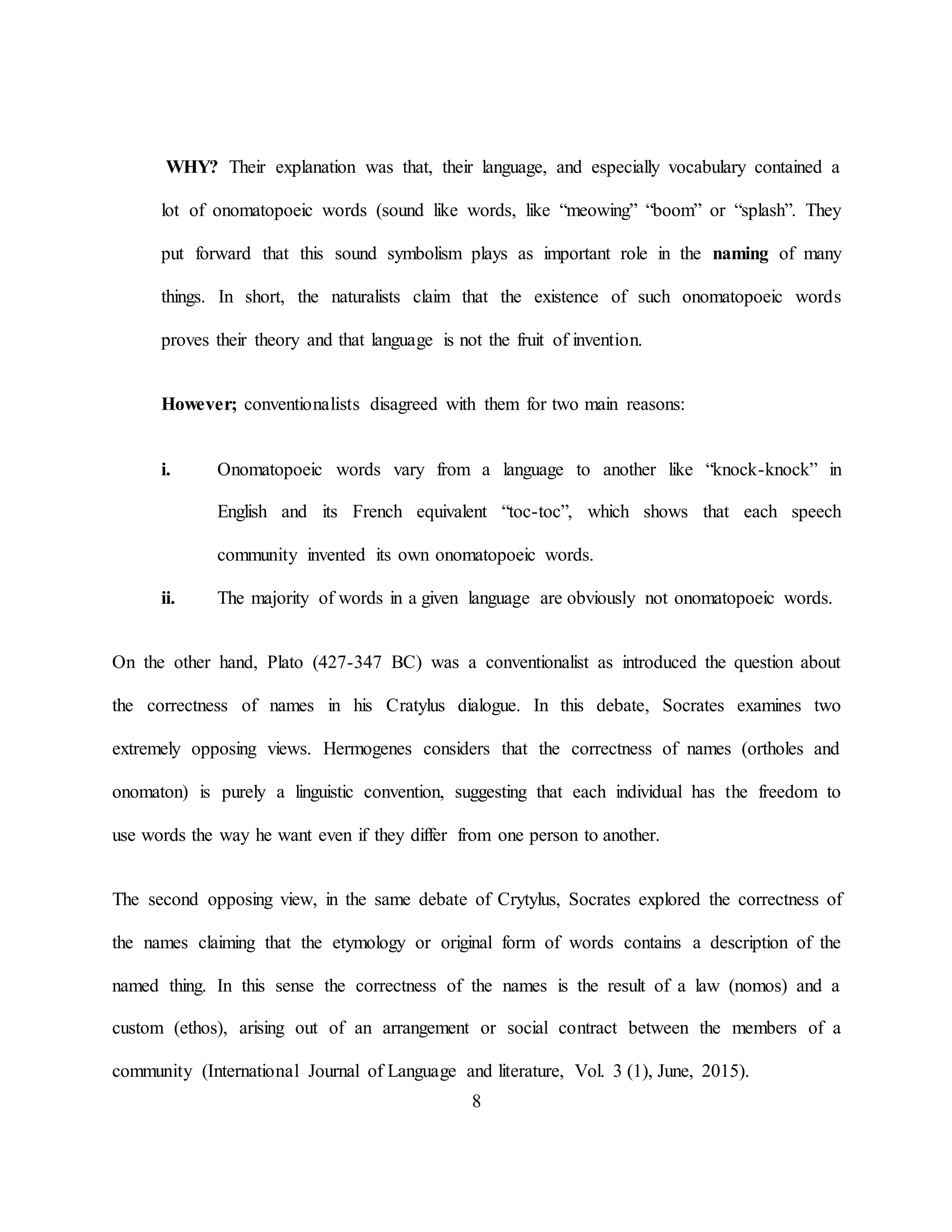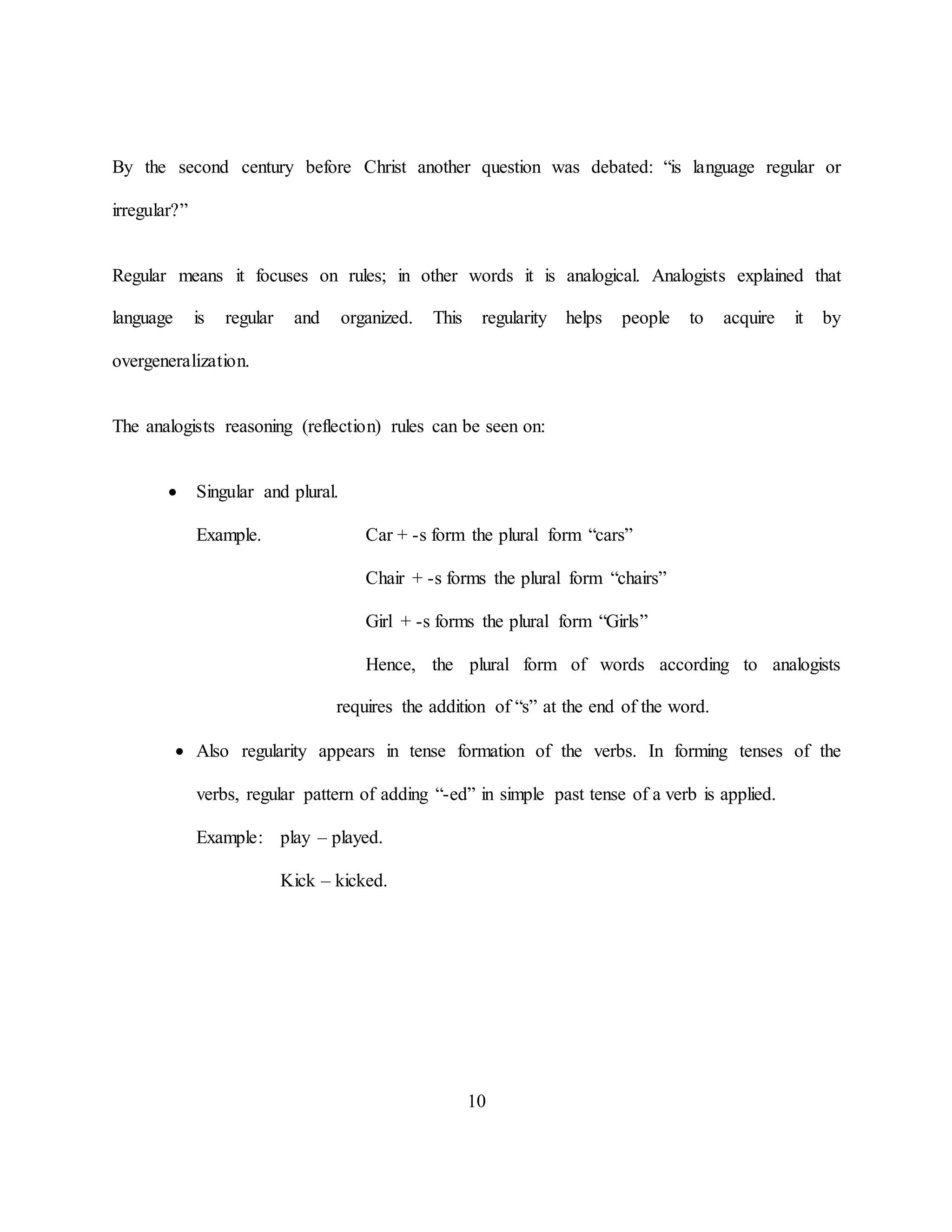This document discusses different types of grammar including descriptive, prescriptive, traditional, and modern grammar. It provides examples to illustrate each type. Prescriptive grammar specifies how language should be used by following certain rules, while descriptive grammar objectively describes how a language is actually used. Traditional grammar is based on Latin grammar principles and is prescriptive, focusing on distinguishing correct from incorrect usage. The origin of language was debated in ancient Greece between views that language is natural or a social convention. Both sides provided arguments but ultimately language is viewed as naturally developing over time through social interactions.











